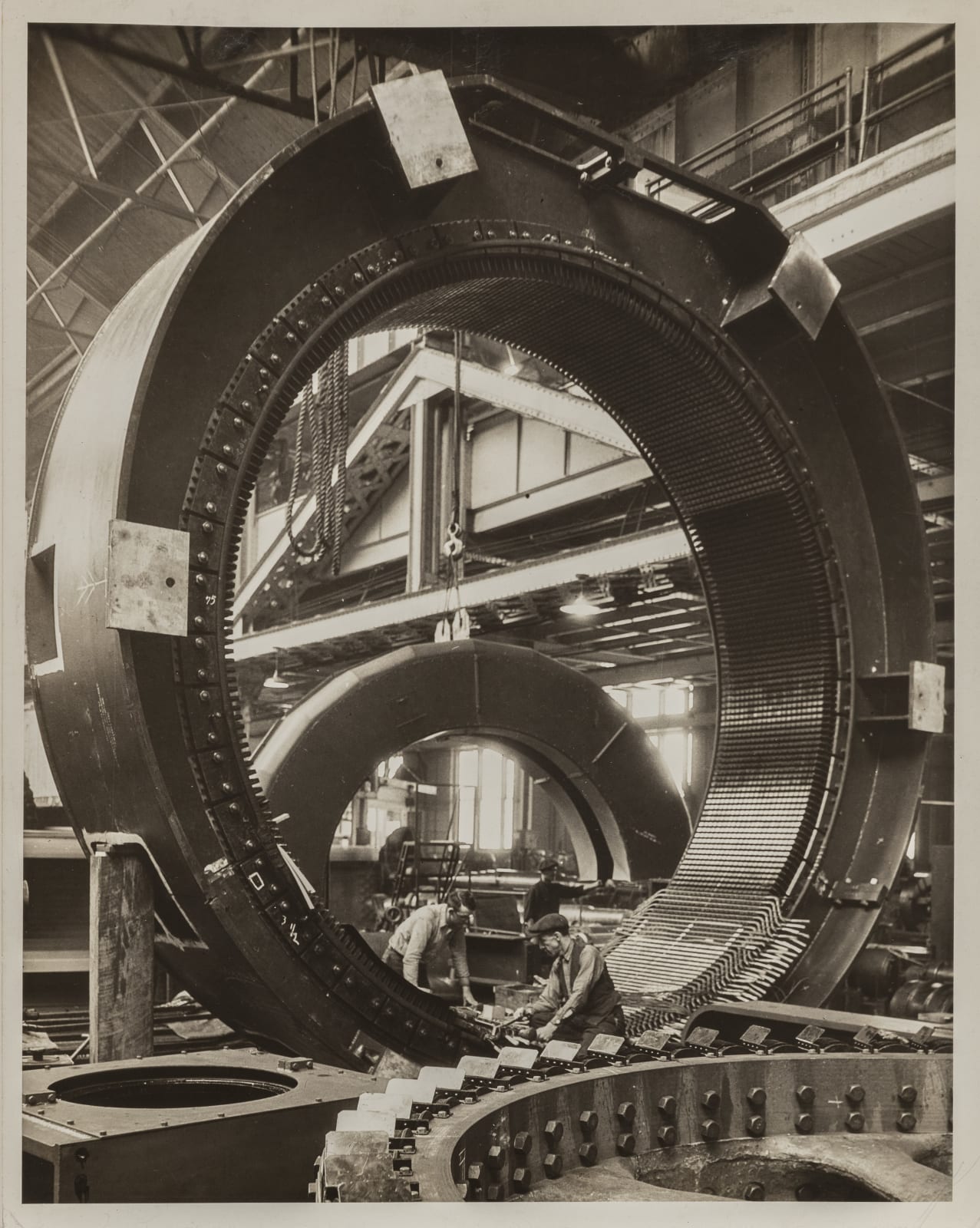Lewis Hine
Electrical Industry Generators, c. 1930
Gelatin silver print
9 1/2 x 7 1/2 inches
24.1 x 19.1 cm
24.1 x 19.1 cm
Signed and inscribed on verso: Electrical Industry Generators / L. Hine
Lewis Hine (1874-1940) Lewis Hine was trained to observe people—he studied sociology at the University of Chicago, Columbia University, and New York University, taking a teaching post in the field...
Lewis Hine (1874-1940)
Lewis Hine was trained to observe people—he studied sociology at the University of Chicago, Columbia University, and New York University, taking a teaching post in the field in the early 1900s. He learned early the craft of photography and used it as a tool for sociological study, bringing a tripod and view camera with his students to Ellis Island to document the scene of arrival in America. The camera became his primary tool in what became a career in social reform: he documented child labor, dangerous working conditions, and generally the plight of the working class. His photography contributed to labor reform, but and it also won Hine a dangerous reputation with foremen and police. Hine described donning false identities to gain access to the factory floor, sometimes explaining that he was there to photograph the machinery itself. [1] His focus remained the workers, but from a sociological standpoint, they couldn’t be entirely separated from their mechanical counterparts. He developed a fascination with the machine – both as collaborator and oppressor of the people he worked to protect.
[1] Walter Rosenblum, America & Lewis Hine: Photographs 1904–1940, New York, 1977, n.p.
Lewis Hine was trained to observe people—he studied sociology at the University of Chicago, Columbia University, and New York University, taking a teaching post in the field in the early 1900s. He learned early the craft of photography and used it as a tool for sociological study, bringing a tripod and view camera with his students to Ellis Island to document the scene of arrival in America. The camera became his primary tool in what became a career in social reform: he documented child labor, dangerous working conditions, and generally the plight of the working class. His photography contributed to labor reform, but and it also won Hine a dangerous reputation with foremen and police. Hine described donning false identities to gain access to the factory floor, sometimes explaining that he was there to photograph the machinery itself. [1] His focus remained the workers, but from a sociological standpoint, they couldn’t be entirely separated from their mechanical counterparts. He developed a fascination with the machine – both as collaborator and oppressor of the people he worked to protect.
[1] Walter Rosenblum, America & Lewis Hine: Photographs 1904–1940, New York, 1977, n.p.
Provenance
Maccabees Mutual Life Insurance Art Collection, Southfield, Michigan;[Sale: Christie’s, New York, September 8, 2006, lot 115]; to
Private collection, New York, until the present
Subscribe to our mailing list to receive updates from the gallery
* denotes required fields
We will process the personal data you have supplied in accordance with our privacy policy (available on request). You can unsubscribe or change your preferences at any time by clicking the link in our emails.

